BEIJING, Sept. 4 (Xinhua) In response to recent reports from netizens that Mei Xiang, a giant panda living in the Washington Zoo, did not eat after delivery and that the zoo did not take good care of Mei Xiang, Weibo, the official of the China Giant Panda Protection and Research Center, published relevant explanations on the 3rd, and responded to many questions.
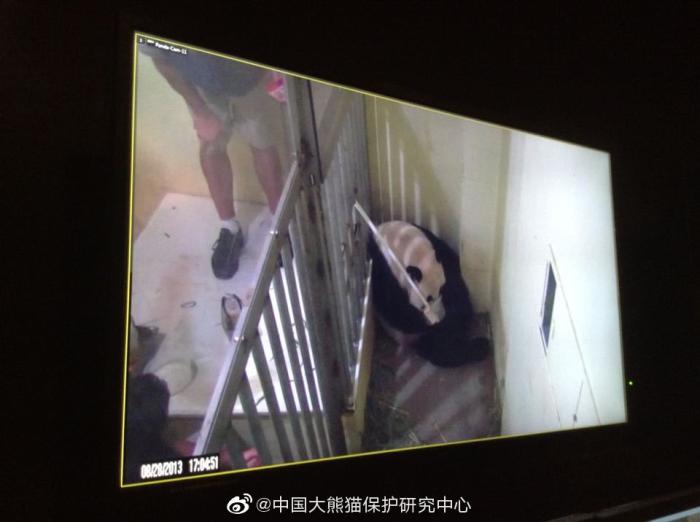
(The picture shows the artificial feeding monitoring screen of Meixiang by the keepers of Washington Zoo after Meixiang gave birth to the giant panda Baobao in 2013.)
Attachment: Description of the giant panda "Meixiang" in Washington Zoo
Recently, some netizens reported that Meixiang, a giant panda living in Washington Zoo, did not eat after delivery, and the living space was narrow. The Washington Zoo did not take good care of Meixiang. After receiving feedback from netizens, China Giant Panda Conservation Research Center attached great importance to it, further verified with the other zoo, and conducted in-depth discussions and exchanges on the "Mei Xiang" situation. The following is a description of the problems reflected by netizens.
1. About the feeding situation of the giant panda Meixiang.During pregnancy, giant pandas will store a lot of energy, and their appetite will gradually recover about a week after mating, and their food intake will reach a normal level in about a month. By the middle of pregnancy, their food intake will increase significantly, and the weight of individual giant pandas will increase to about 20% of their weight before estrus, but by the late pregnancy (20-35 days), their appetite will gradually deteriorate, and their food intake will drop significantly, and they will basically not eat food before labor.
In the late pregnancy, the females of giant pandas have obvious changes: some females will nest about 15 days before delivery, and their breasts and vulva will change obviously. About 3 days before delivery, females will begin to show slight fidgety behaviors (such as frequent walking, playing in water, scratching and biting wood branches and bamboo).
After the giant panda cubs are born, the females devote all their energy to caring for their cubs. In captivity, they will lose their cubs or pick them up for the first time to excrete feces 3-5 days after delivery. Most females start to eat a small amount of bamboo leaves about 5 days after delivery, but there are great individual differences. Some females have strong maternal instinct. In order to take better care of their cubs, even if food is placed next to them, females usually do not eat or eat in small amounts, so as not to affect the feeding of their cubs, and some do. At the same time, with the increase of the age of the cubs, the females will gradually start to lose their cubs briefly and defecate and feed. After feeding, mainly fresh bamboo leaves should be kept at a certain distance from the young, so as to prevent the young from being injured by residual bamboo fibers. When the bamboo intake reaches more than 2 kg, concentrate feed should be fed. After giving birth for 2 months, according to the appetite change and excretion of the female animals, the feed amount of concentrate and coarse feed should be gradually transferred to the daily feeding mode. For females with strong appetite and hunger, the feed amount of concentrated feed can be increased to 115% ~ 130% of the daily feed amount.
Previously, when the giant panda "Meixiang" gave birth to "Baby" and "Beibei", it only drank water four days after delivery, and began to eat a small amount after 11 days. The zoo has plenty of water and food outside the delivery room, and Meixiang can walk out of the delivery room to eat at any time. But now, out of the instinct to protect the safety of her young, she only goes out for a short time to drink water, and will gradually start eating naturally in the future. During this period, in order to help Meixiang eat, the Washington Zoo keeper artificially fed the giant panda in the delivery room.
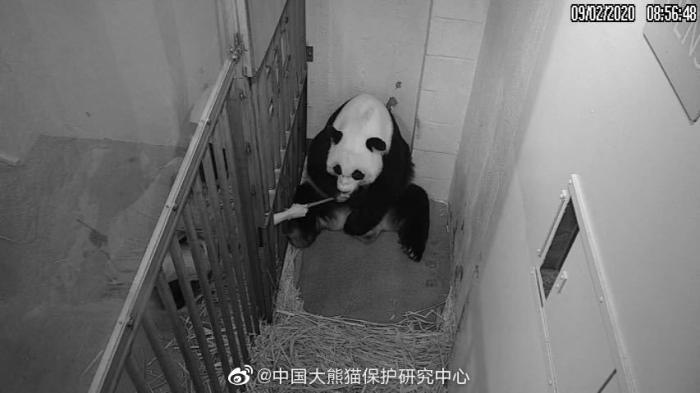
(The picture shows the monitoring screen of the artificial feeding of Meixiang by the Washington Zoo keeper after the production of the giant panda.)
2. About the postpartum living space of Meixiang.In order to provide a good environment for the mother giant panda to nurse her cubs, the giant panda is usually placed in a sound-proof, light-proof, low-noise and undisturbed delivery room before giving birth. The delivery room is a tree hole (about 90cm in diameter and 130cm in height) or a tree pond (about 85cm in diameter and 70cm in height) prepared for the giant panda according to the characteristics of the wild giant panda nest, or it is transformed into a relatively small room according to the conditions of enclosure, so that the mother animal has a certain sense of security. Previously, the two productions of "Meixiang" were also in the same room.
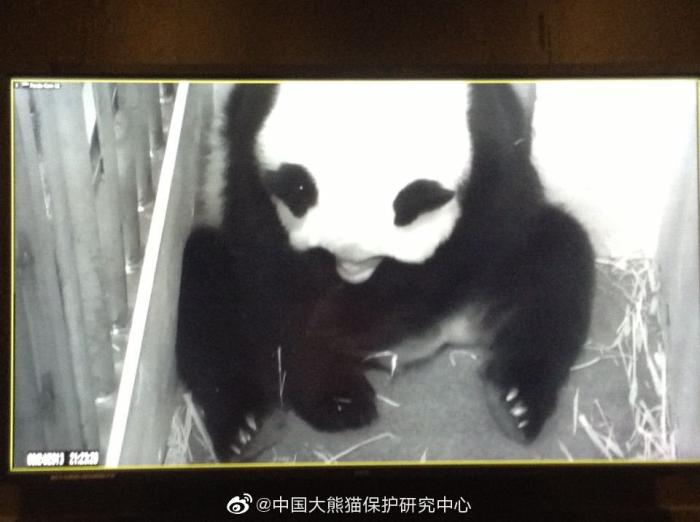
(The picture shows the monitoring screen when Meixiang produced the giant panda "Baby")
3. Washington Zoo takes care of Mei Xiang.The Panda Center and the Washington Zoo have always maintained close contact, and the two sides have established a long-term exchange and guidance mechanism. Prior to the two productions of Meixiang, the Panda Center sent experts to Washington Zoo for on-the-spot guidance. This time, due to the epidemic situation, the Panda Center conducted online guidance and exchange on Meixiang’s babies. During the calving period, the Washington Zoo monitored and cared for giant pandas in full accordance with the requirements of the Panda Center, and the zoo sent special personnel to closely monitor the behavior of giant pandas 24 hours a day.
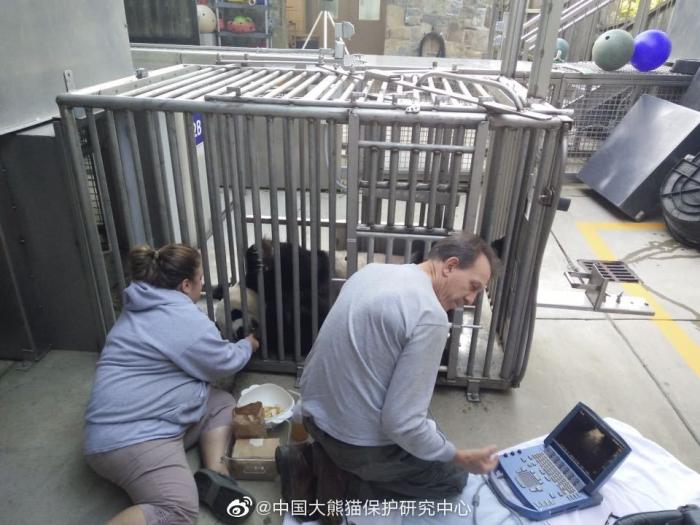
(The picture shows the veterinarian of Washington Zoo doing B-ultrasound for Meixiang.)
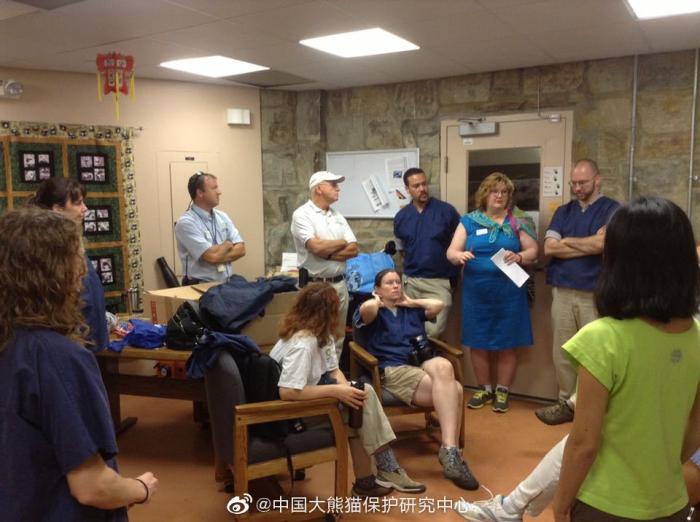
(The picture shows the "Meixiang" prenatal meeting held in Washington Zoo)

(The picture shows the monitoring room of the Washington Zoo. During the calving period, the staff closely monitored the pandas for 24 hours.)
On the birth of the giant panda "Meixiang", the Washington Zoo updated its official website from August 21st to 28th (every day) and 31st, and also popularized some postpartum behaviors of "Meixiang".
Thank you again for your concern for the giant panda!
关于作者